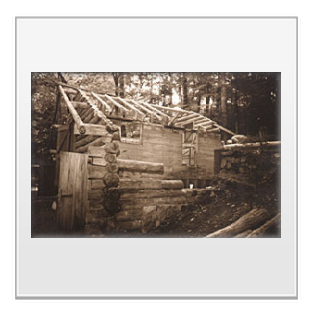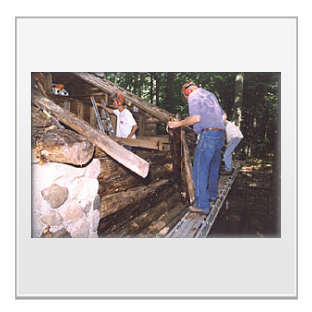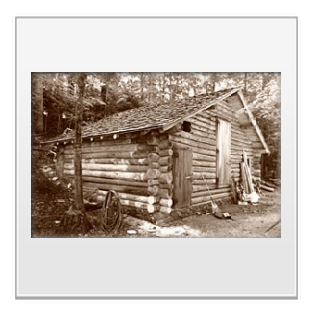Forest Lodge - Passport in Time
Main menu:
Previous Projects > States S-W
Forest Lodge
Chequamegon-Nicolet National Forest, Wisconsin, 1999
by Kim Potaracke, FS Archaeological Technician
During the summer of 1999, two simultaneous projects were underway at one location. The FS had recently acquired an extraordinary 870-acre tract of forested land once owned by the Livingston family along the shores of Lake Namekagon in northern Wisconsin. In the early 1900s, family patriarch Crawford Livingston and his wife, Mary, had their main residence in St. Paul, Minnesota. The Lake Namekagon property was the family’s “country getaway.” Livingston’s granddaughter, Mrs. Mary Griggs Burke, comes from a line of nature and art lovers who came to northern Wisconsin initially to hunt, fish, and carouse at their “hunting shack” on the lake. This “shack” is nothing like the hunting camps I’m used to. The complex of buildings on the property eventually grew into what is today referred to as Forest Lodge, an Adirondack-style camp that includes a dozen finely crafted log-and-stone buildings set in a remarkably beautiful historic landscape. The Livingston-Griggs-Burke family used the property originally for a men’s getaway, but it soon turned into a family summer vacation haven. It was equipped in the 1930s with a small dairy, icehouse, and gardens.
What could a few archaeologists and a handful of volunteers and students accomplish here in the name of historic preservation, you ask? Plenty. First of all, the property is on Lake Namekagon, which has about 2 miles of shoreline that needed to be surveyed for archaeological sites. Then, the historic icehouse had fallen into disrepair and needed to be restored. So we met the challenge. For two weeks, one group of PIT volunteers and students from Nicolet College shovel-tested along the shoreline of this big beautiful lake, while another group of PIT volunteers dismantled the icehouse and replaced the rotten logs and cedar shake roof. That was something to behold. It was accomplished during one of the hottest, muggiest summers we have encountered, but all were diligent about continuing to work.
As a result of two weeks of archaeological survey, three previously unrecorded precontact American Indian sites were found, referred to as Namekagon Lake I, II, and III. Two were small; one was quite extensive. All three sites yielded only lithic materials. A hammer stone and an abrader were found at Namekagon Lake III.
The icehouse was laboriously taken apart by a team of 5–6 volunteers, the FS engineer, the assistant district ranger, and 2 log building and restoration experts. It was more deteriorated than previously thought. For those of us in the survey crew, it was pretty interesting, because we would leave in the morning and the icehouse would be intact, and by the end of the day, the walls or the roof would be gone, and then the next day, they’d be replaced, and so on.
We also had two volunteers working on researching the Forest Lodge property and the surrounding area at the History Center and Archives in Ashland, Wisconsin. They worked with State Historical Society of Wisconsin Archivist and project consultant Linda Mittlestadt, looking at old deeds, maps, and other previous inventories. Also, we were fortunate to have Jeff Cate, FS employee and professional photographer, to document the project before, during, and after restoration. His photographs will provide a permanent record of the restoration process.
We surpassed our expectations in both projects. We did not shovel-test all 2 miles of shoreline during the survey project, but we did cover the amount of shoreline planned and discovered three new sites in the process. We also identified two new historical-period sites as a result of archival research. One is the Northern Wisconsin Lumber Company camp that was on the property around 1884, and the other is a summer home or homes constructed sometime after 1890 on Champagne Island, apparently represented today only by earthen foundations.


